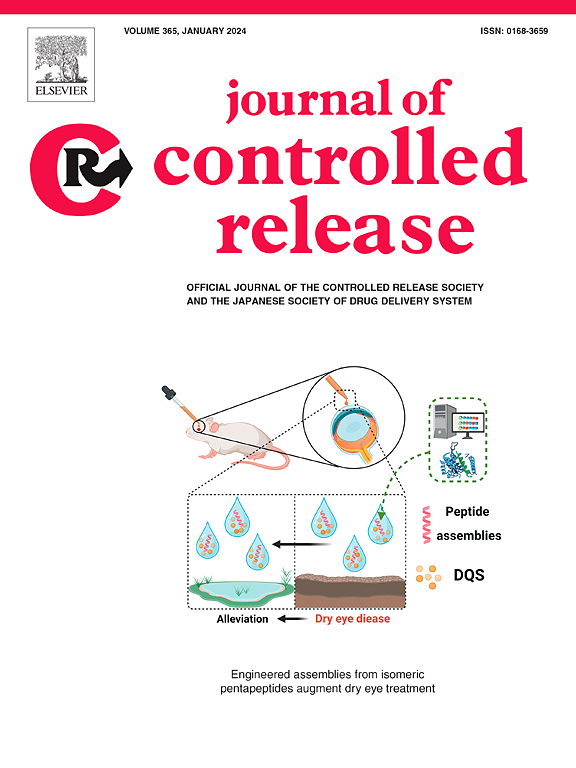Receptor-mediated transcytosis of nanobodies targeting the heparin-binding EGF-like growth factor in human blood-brain barrier models
IF 10.5
1区 医学
Q1 CHEMISTRY, MULTIDISCIPLINARY
引用次数: 0
Abstract
Transport of molecules into the brain is regulated by the blood-brain barrier (BBB). Receptor-mediated transcytosis (RMT) is a targeted vesicular transport mechanism of brain endothelial cells that can be employed to specifically transport large therapeutic molecules into the brain. ProHB-EGF is the transmembrane precursor of the heparin-binding EGF-like growth factor (HB-EGF) present on the intraluminal side of the brain endothelial cells. This molecule is characterized as an internalizing transport receptor with so far no discovery of endogenous ligands. In this study, we describe the selection and characterization of two nanobodies (named F12 and H7) with high binding affinity for proHB-EGF and their BBB transcytosis potential were tested in vitro. For the human BBB model, we found that a polarized co-culture environment was crucial for the expression and cell surface display of proHB-EGF. The ability of F12 and H7 to pass the BBB via RMT was demonstrated in both a primary human brain microvascular endothelial cell-based BBB model and a human induced pluripotent stem cell (hiPSC)-derived iBBB model. Our studies demonstrate that the proHB-EGF targeting Nbs are promising BBB shuttle molecules for delivery of therapeutic molecules into the brain.

受体介导的靶向肝素结合egf样生长因子的纳米体在人血脑屏障模型中的胞吞作用
分子进入大脑的运输是由血脑屏障(BBB)调节的。受体介导的胞质转运(RMT)是脑内皮细胞的一种靶向囊泡转运机制,可用于特异性地将大的治疗分子转运到脑内。ProHB-EGF是存在于脑内皮细胞腔内侧的肝素结合egf样生长因子(HB-EGF)的跨膜前体。该分子的特点是内化转运受体,迄今尚未发现内源性配体。在这项研究中,我们描述了对proHB-EGF具有高结合亲和力的两种纳米体(命名为F12和H7)的选择和表征,并在体外测试了它们的血脑屏障转吞潜能。对于人血脑屏障模型,我们发现极化共培养环境对proHB-EGF的表达和细胞表面展示至关重要。F12和H7通过RMT传递血脑屏障的能力在基于人脑微血管内皮细胞的血脑屏障模型和人诱导多能干细胞(hiPSC)衍生的iBBB模型中均得到证实。我们的研究表明,靶向Nbs的proHB-EGF是有望将治疗性分子递送到大脑的血脑屏障穿梭分子。
本文章由计算机程序翻译,如有差异,请以英文原文为准。
求助全文
约1分钟内获得全文
求助全文
来源期刊

Journal of Controlled Release
医学-化学综合
CiteScore
18.50
自引率
5.60%
发文量
700
审稿时长
39 days
期刊介绍:
The Journal of Controlled Release (JCR) proudly serves as the Official Journal of the Controlled Release Society and the Japan Society of Drug Delivery System.
Dedicated to the broad field of delivery science and technology, JCR publishes high-quality research articles covering drug delivery systems and all facets of formulations. This includes the physicochemical and biological properties of drugs, design and characterization of dosage forms, release mechanisms, in vivo testing, and formulation research and development across pharmaceutical, diagnostic, agricultural, environmental, cosmetic, and food industries.
Priority is given to manuscripts that contribute to the fundamental understanding of principles or demonstrate the advantages of novel technologies in terms of safety and efficacy over current clinical standards. JCR strives to be a leading platform for advancements in delivery science and technology.
 求助内容:
求助内容: 应助结果提醒方式:
应助结果提醒方式:


